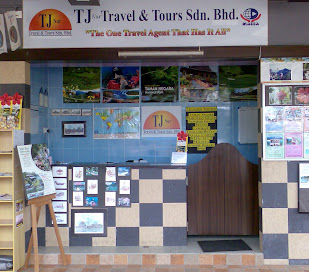    | |
LOCATION: The city of Ipoh is located about 200 km north of Kuala Lumpur. Journey through the North South Expressway (NSE or PLUS Highway) takes a breezy 2 1/2 hours through scenic rolling valleys, palm oil plantations and limestone hills of Peninsula Malaysia. Distances from other major cities: Penang (2 hours), Johor Bharu (6 hours), Singapore (6 1/2 hours) and Kuantan (5 hours). DESCRIPTION: A city rich in history, Ipoh often conjures the images of laid-back municipality intertwined with old-world charms and gastronomic delights even to the most persnickety types. The equally historic Kinta River (Sungai Kinta) cuts across the city, subliminally divides the locality into the much fabled Ipoh Old Town and New Town. In general, the city jurisdiction covers other smaller towns as well, namely Chemor, Jelapang, Falim (or Farlim), Menglembu, Tanjong Rambutan, Silibin, Manjoi, Simpang Pulai, Bercham, Tambun, Gunung Rapat, Sungai Rokam, Pasir Puteh, Lahat, Pengkalan, etc. The city is administered by Majlis Bandaraya Ipoh, or (un)affectionately known as MBI by its citizens. The city, to some level, was founded by Sir Frank Swettenham, a British colonial resident, in 1893 when the Ipoh Sanitary Board was formed. In 1962, it was upgraded to Majlis Perbandaran Ipoh, a municipal status, before it was accorded a city status in 1988 where the current Ipoh City Council takes reign of the city administration. It is often said that Ipoh was the third municipality to be accorded a city status, after Kuala Lumpur (1974) and Penang (1957 by the Queen Elizabeth II, when the Federation of Malaya was still under the British colonialism). Yet, in reality, Penang (or Georgetown to be exact) was never an official city in present-day status. In fact, in 1976, the so-called City Council of Georgetown was reorganised to become the current Majlis Perbandaran Pulau Pinang (or Penang Municipal Council). Hence, by going on the technicalities of this somewhat trivial information, Ipoh is really the second municipality to be accorded a city status in Malaysia (whew, can't believe I spent a whole paragraph on this!). What is today a city covering an area of 643 sq km started as a sleepy hollow on the banks of Kinta River before the tin (or locally known as bijih timah) was discovered in the Kinta Valley. The implosion of growth of the city due to the mining i ndustry was probably comparable to that witnessed by Kuala Lumpur (with the discovery of bijih timah in the Klang Valley). I found an interesting excerpt from Wikipedia that best summarises the effect of tin mining industry to the city (which I dubbed as the "tin rush" area):
Sadly, the growth of Ipoh, once dubbed as "City of Millionaires" and "The Town that Tin built" was severely stunted when the tin prices collapsed in the 1970s and 1980s. The tin mines were closed and various local and foreign companies cease their operations. The remnant of the industry can still be seen today in the outskirts of the city, i n places like Kampar, Pusing, Lahat and Gopeng. Today, the large tract of mining lakes is converted into other use, such as duck rearing, fish breeding, recreational parks and even fruit farming (after extensive land rehabilitation, I reckon). A number of tin dredges have also been advertised as a tourist attraction, though in reality, not many people visit those. Nonetheless, natural urban growth still takes place in the city. Being the administrative capital for the state of Perak, Ipoh has not really died a slow death. While the city is not known for state-of-the-art commercial towers or the hippest night joints, time has allowed to the city to re-discover i ts own character as a laid-back town with visibly no traffic jams or occasional flash floods. In fact, Ipoh is often regarded as one of the cleanest city in the country (apart from the impressive city of Kuching in Sarawak). Many residents will swear by the slower pace of life in the city, apart from the best white coffee, mouth-watering pomelos (limau bali or limau tambun) and hor fun which are treasured by people from all walks of life. While Ipoh is not so much known for her tourist attractions, I managed to write a number of articles on the sights in and around the city which probably worth a weekend stopover:
|
IPOH
In CITYWednesday, September 15, 2010
Ipoh developed into one of Malaysia's main cities due to the booming tin mining industry around the turn of the 19th century. During the British colonial era, Ipoh was Malaysia's second city for administration purposes. There are several notable buildings from the British Colonial era such as the railway station and the town hall. The population of Ipoh is about 70% of Chinese origin These days Ipoh is perhaps best known for its excellent restaurants, hawkers, and famous local dishes.
Related Posts:
Subscribe to:
Post Comments (Atom)

.JPG)








.jpg)
0 comments:
Post a Comment